
Jason Heo ’15
Louis Lainé ’16
Gorilla collage by Andy Gellenberg
(See pg. 4)
Building Community
campbell
And what about gorillas and rules? Try figuring that out in real time with a 500-pound animal. When researching them, Amy Vedder ’73, H’23 and Bill Weber ’72, H’23 quickly established the importance of setting boundaries between their own desires to learn as much as they could about the endangered apes and the needs (and rights) of the gorillas to live unperturbed.
The couple’s work over decades has resulted in a masterpiece of conservation that continues to evolve, changing rules along the way about the understanding of interdependence between wildlife and the people surrounding wild places. Endangered species need advocates in the humans who share space and resources with the animals. Deciding to look at communities holistically changed the way Vedder and Weber practiced conservation — and now — how they teach it.
G. Raymond Rettew, Class of 1926, loved the rules of chemistry. But German proved too much for the humble chemist from West Chester, Pa. Though he failed his German courses twice, he was committed to aiding his national community in the war effort. The leading practical expert on mushroom spawn, Rettew helped to develop a rapid process for mass production of penicillin during World War II.
For Mary Rowe ’57, change making meant deciding to jump into the complexities of workplace rights. As an organizational ombuds, Rowe has written a set of guiding principles that continue to elevate fairness across higher education.
A decision to sail across the world after graduation led Janice Robb Anderson ’42 to a lifelong love of language and learning. The 103-year-old still volunteers, deciding that being a part of a community has enriched her perspective. So has eating her vegetables, by the way.
Music is definitively built on rules. But Stephanie Hsu ’08 decided it’s OK to break them and hasn’t looked back. As founding executive director of Yakima Music en Acción, Hsu says mistakes are proof her students are engaged in the process of learning.
For Swarthmoreans, experiences shape decisions about what is important. That often changes in the midst of learning. Asking the questions they did in their lives and careers helped these alumni forge paths unforeseen. Now others follow, and more than likely, will ask a new set of questions about ‘who decides’ and why.
swarthmore college bulletin
Andy Hirsch
Director of Content Strategy
Mark Anskis
Editor
Kate Campbell
Managing Editor
Ryan Dougherty
Editorial Specialist
Nia King
Class Notes Editor
Heidi Hormel
Designer
Phillip Stern ’84
Photographer
Laurence Kesterson
Administrative Coordinator
Lauren McAloon
Editor Emerita
Maralyn Orbison Gillespie ’49
Email: bulletin@swarthmore.edu
Telephone: 610-328-8533
We welcome letters on articles covered in the magazine. We reserve the right to edit letters for length, clarity, and style. Views expressed in this magazine do not necessarily reflect the opinions of the editors or the official views or policies of the College. Read the full letters policy at swarthmore.edu/bulletin.
Send letters and story ideas to
bulletin@swarthmore.edu
Send address changes to
records@swarthmore.edu
Printed with agri-based inks.
Please recycle after reading.
©2024 Swarthmore College.
Printed in USA.

On Our Radar
Her Best Self

Head, who was one of more than 30 nominees from all across the College, was lauded for her unwavering dedication to the College community. In particular, colleagues highlighted Head’s ability to deftly and tirelessly balance the needs of students and the College.
“She brings her best self to every situation, offering thoughtful advice, proposing solutions, and identifying the ripple effects of various scenarios,” said Andy Feick, assistant vice president for sustainable facilities operation and capital planning, who nominated Head for the award.
Word of Honor
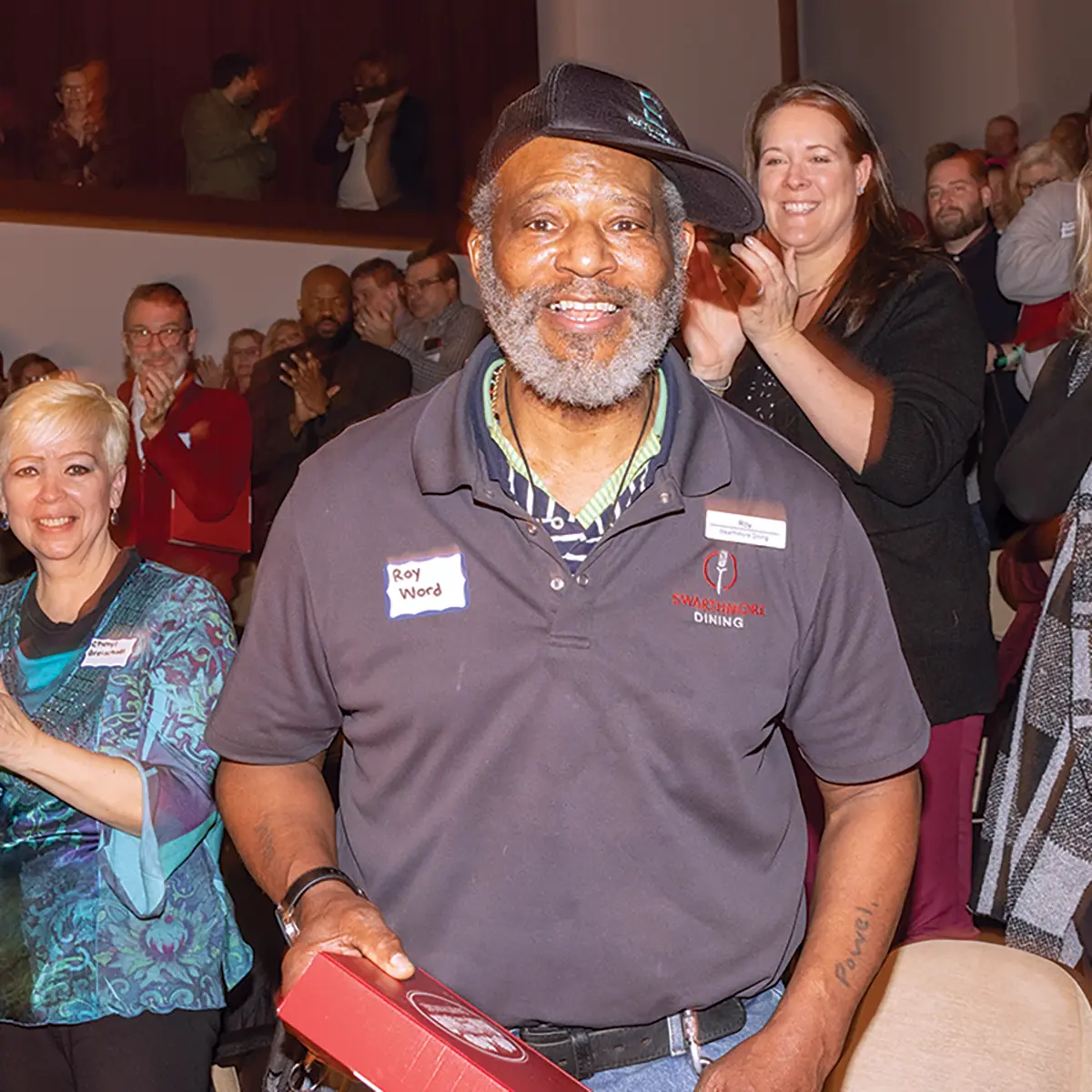
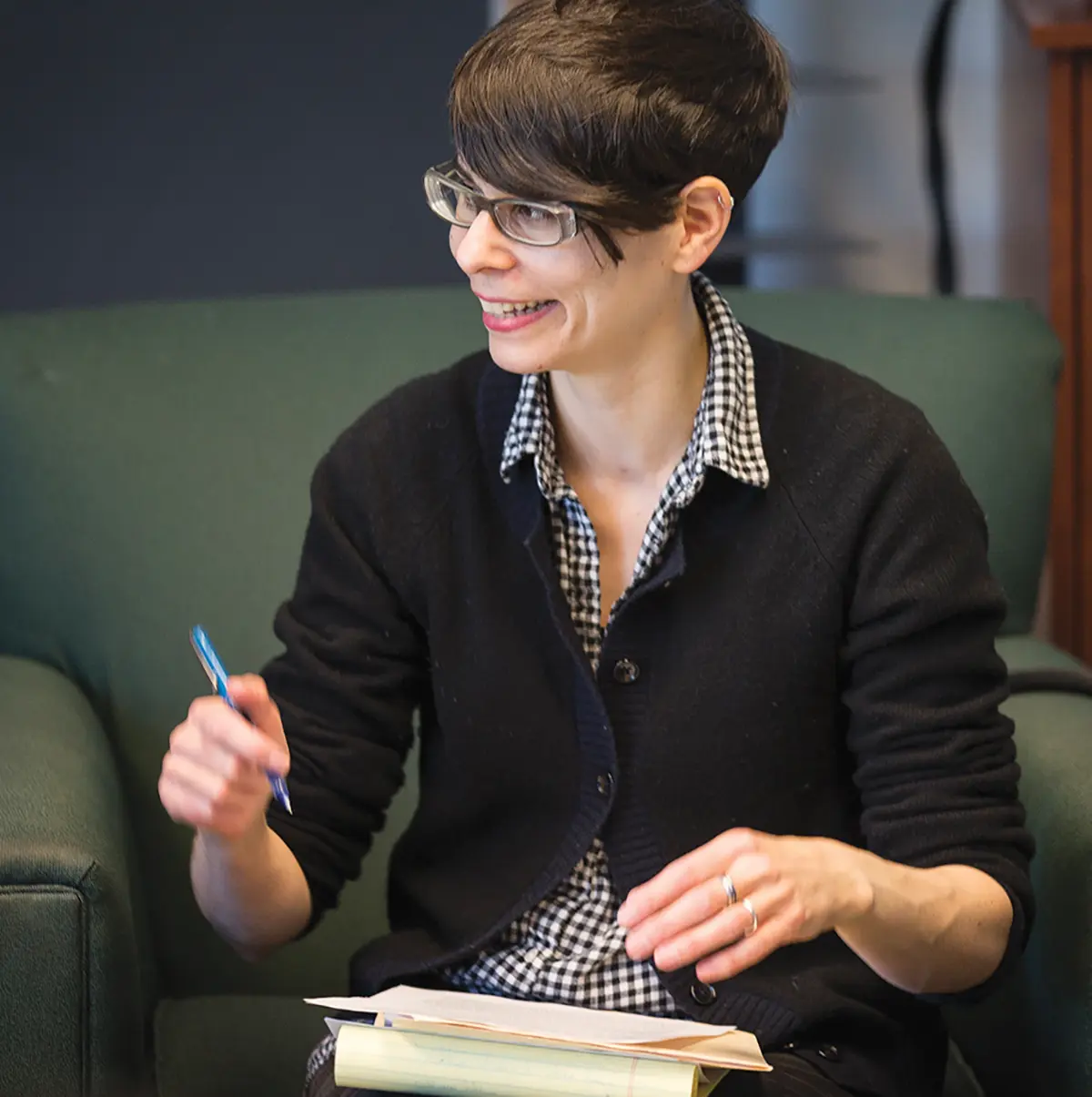
National Prize for Best Book on Teaching
This national prize for best book on teaching literature at the college level is bestowed biennially by graduate faculty in the Department of English and Philosophy at Idaho State University. Each nominated book is judged by a committee of external and internal reviewers.
Buurma’s and Heffernan’s book delves into the history of teaching literature in the 20th century. The co-authors examine syllabi, course notes, lectures, and assignments from key literary critics and authors such as T.S. Eliot, I.A. Richards, Caroline Spurgeon, and Simon J. Ortiz.
“It’s especially meaningful to us because the prize — like our book itself — elevates and draws attention to the everyday teaching of literature,” says Buurma.
Bridges to the World
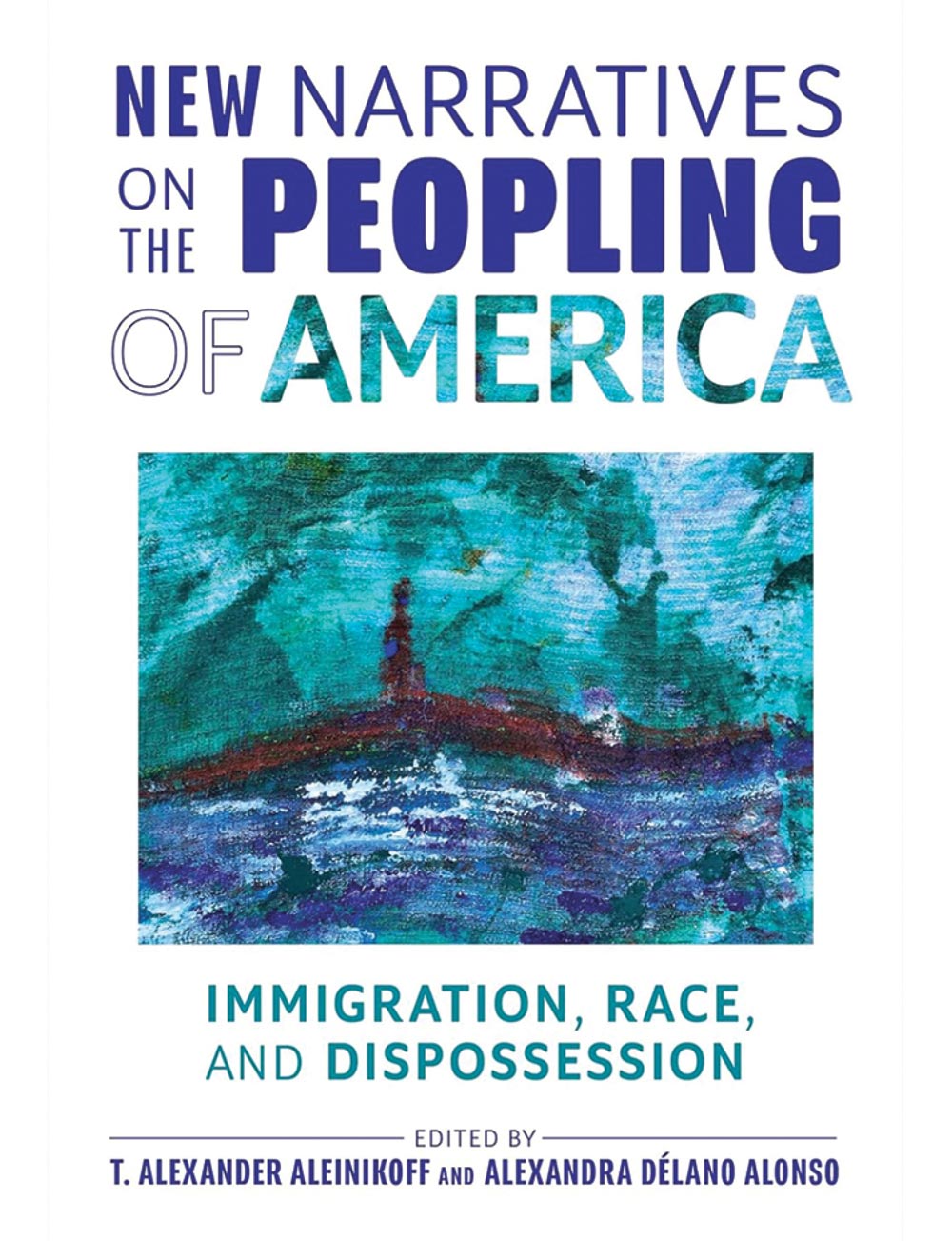
But this raises another problem. The dominant narrative describes the United States as a “nation of immigrants” — a telling that ignores and erases the stories of those who were here before the arrival of Europeans, who arrived on our shores in chains, who were incorporated into the American people as the nation expanded overseas, and who were removed from the U.S. after their arrival. To construct a more inclusive national narrative, my colleague Professor Alexandra Délano (associate professor of Global Studies at The New School), and I sought contributions from academics, writers, photographers, poets, and activists. The result is New Narratives on the Peopling of America: Immigration, Race, and Dispossession, just published by Johns Hopkins University Press.
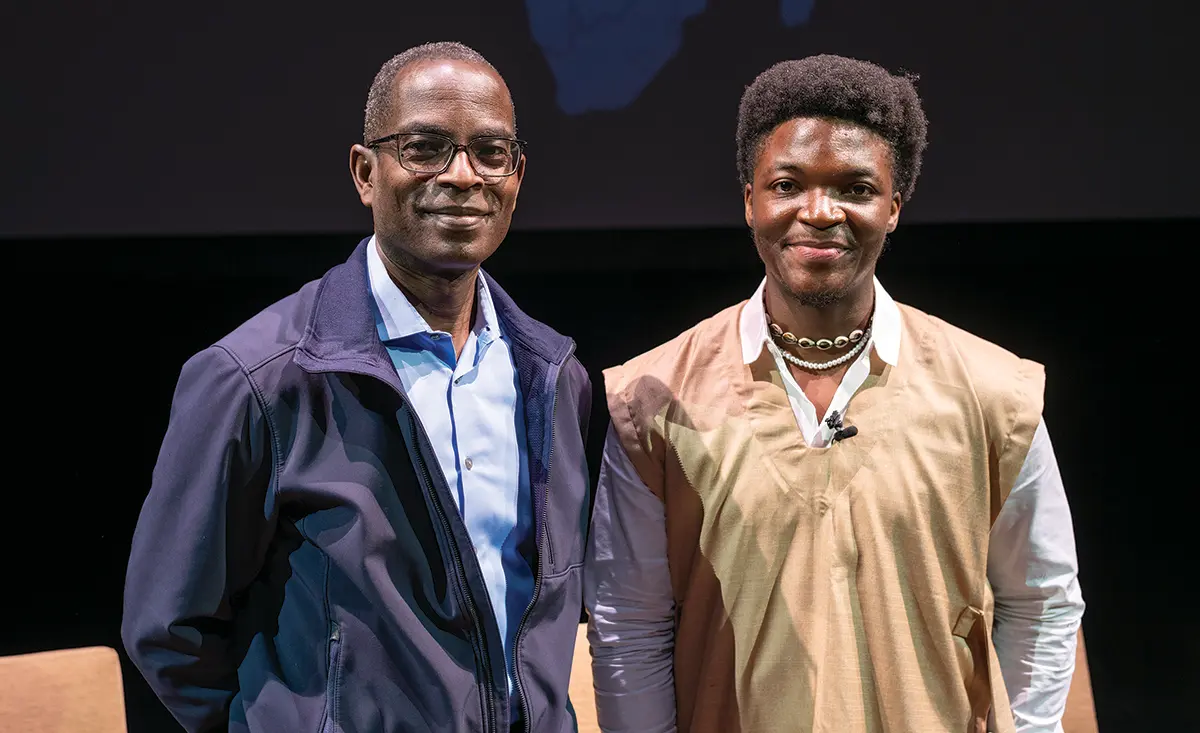
studentwise: africa is rising
Before coming to Swarthmore, Mukum founded G3 For Peace, an organization that empowers women displaced by Cameroon’s sociopolitical crisis by helping them grow food, communities, and hope. He collaborated with peers to set up Let’s Help Cameroon,visiting orphanages and helping children cope with displacement and language barriers.
Submit your publication for consideration: books@swarthmore.edu
HOT TYPE: New releases by Swarthmoreans
Emily K. Abel ’64 and Margaret K. Nelson ’66
The Farm & Wilderness Summer Camps: Progressive Ideals in the Twentieth Century
Rutgers University Press
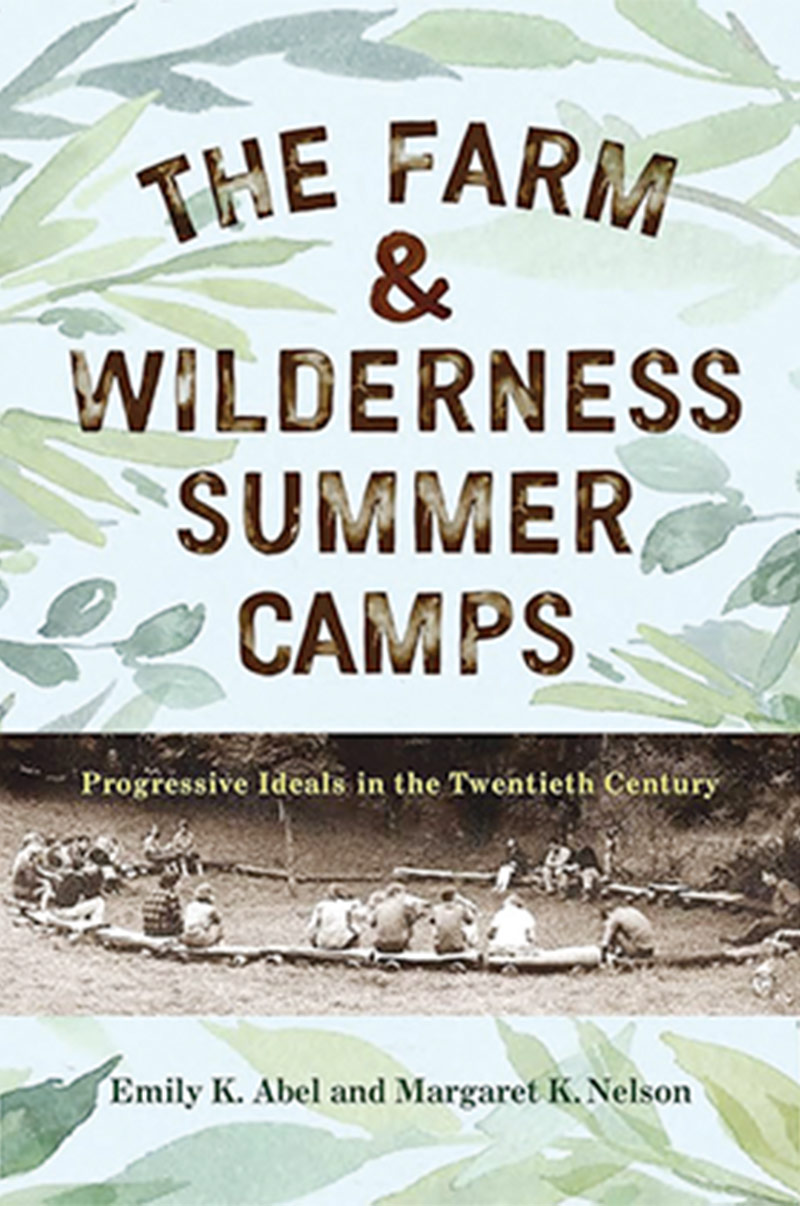
Mary Rechner ’90
Marrying Friends
Propeller Books

Building an Inclusive World
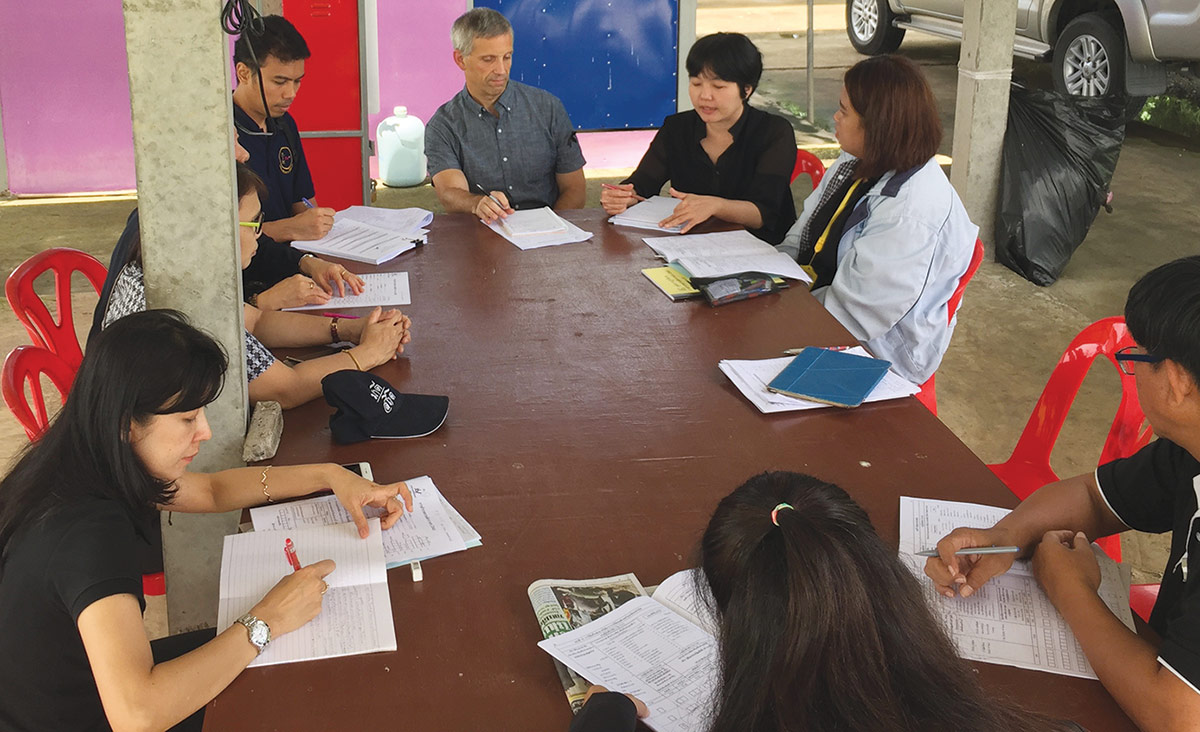
Though he’d majored in economics at Swarthmore, received a Ph.D. in economics from the University of Wisconsin–Madison, taught economics at Cornell University, and worked for the Congressional Budget Office, he’d left to pursue his dreams of making a living as a writer and actor.
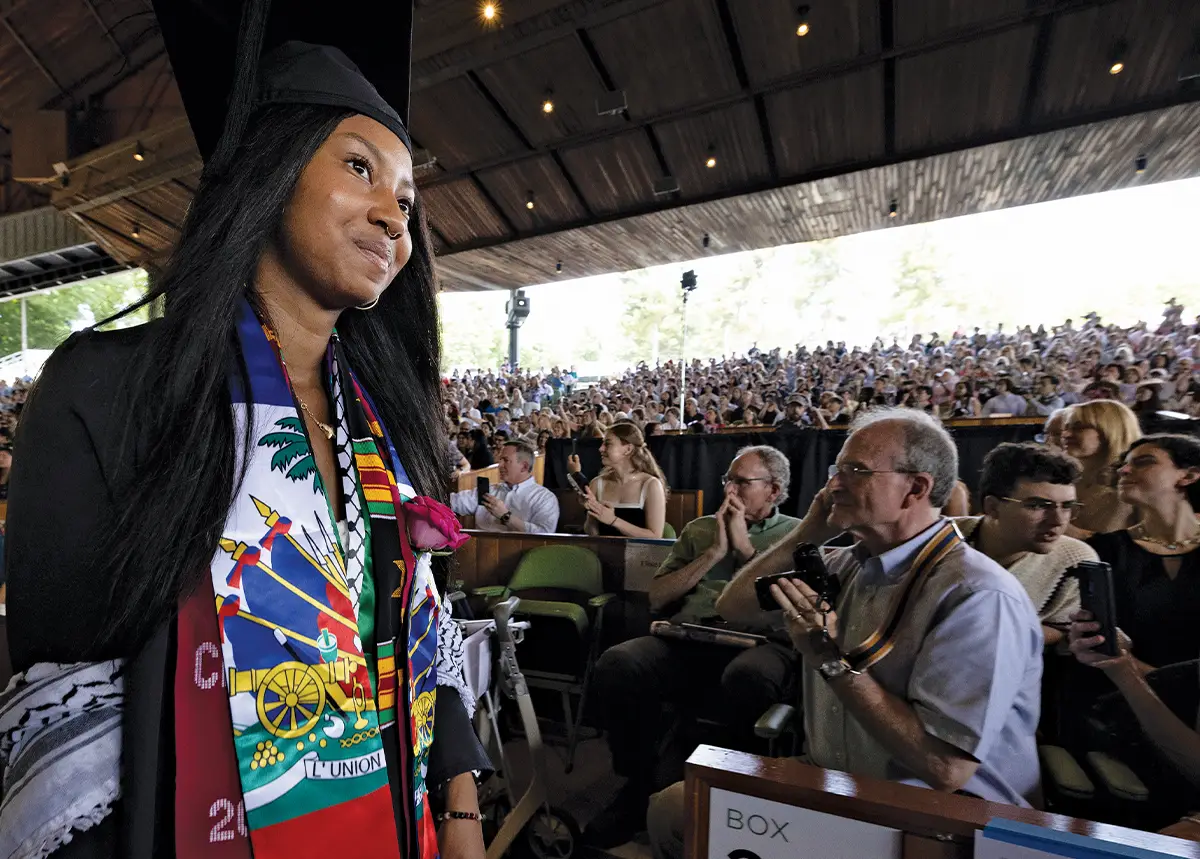
Momentous Moves: Congratulations Class of 2024!
n a warm, hazy, Sunday morning, members of the Class of 2024 received their degrees at Swarthmore College’s 152nd Commencement ceremony May 26.
Of the 413 graduates, 399 received the Bachelor of Arts degree and 28 the Bachelor of Science in engineering degree. Fourteen received dual degrees. A total of 68 students received a level of Honors. Nora Sweeney ’24 offered remarks as the senior class speaker.
After receiving their degrees on stage, the graduating engineers created and closed out on a “Zoom call” for the Swarthmore Engineering Class of 2024 — a nod to the graduates ending their high school experience and beginning college during the pandemic.
sharing success and stories of swarthmore
common good

Object Lesson
“It was great to see so many members of our community come out to experience this awe-inspiring event,” says Eric Jensen, Walter Kemp Professor of Astronomy and dean of academic success. “We were a little short on eclipse glasses, which turned out to have the unexpected benefit of getting people to talk to others they didn’t already know — crossing student, staff, and faculty lines — to share glasses and to appreciate this together.
The astronomical events have significance in several ways, says David Cohen, professor of astronomy. “They are spectacles that don’t just affect our view of one object, but also affect the entire sky and landscape.”
During an eclipse, the moon and sun appear to be almost exactly the same size as each other. (In reality, the moon is 400 times smaller and 400 times closer), he says. “We get a clear view of the solar corona — the tenuous, hot plasma above the surface of the sun, which initiates the solar wind, which cause aurorae.”
In 1919, an expedition to view and photograph a total solar eclipse showed that Einstein’s prediction that massive objects curve space and bend light was correct, as the displacement of stars’ positions when viewed near the limb of the eclipsed sun, matched the predictions of general relativity, Cohen says. “This is considered to be the first confirmation of Einstein’s theory.”
— KATE CAMPBELL
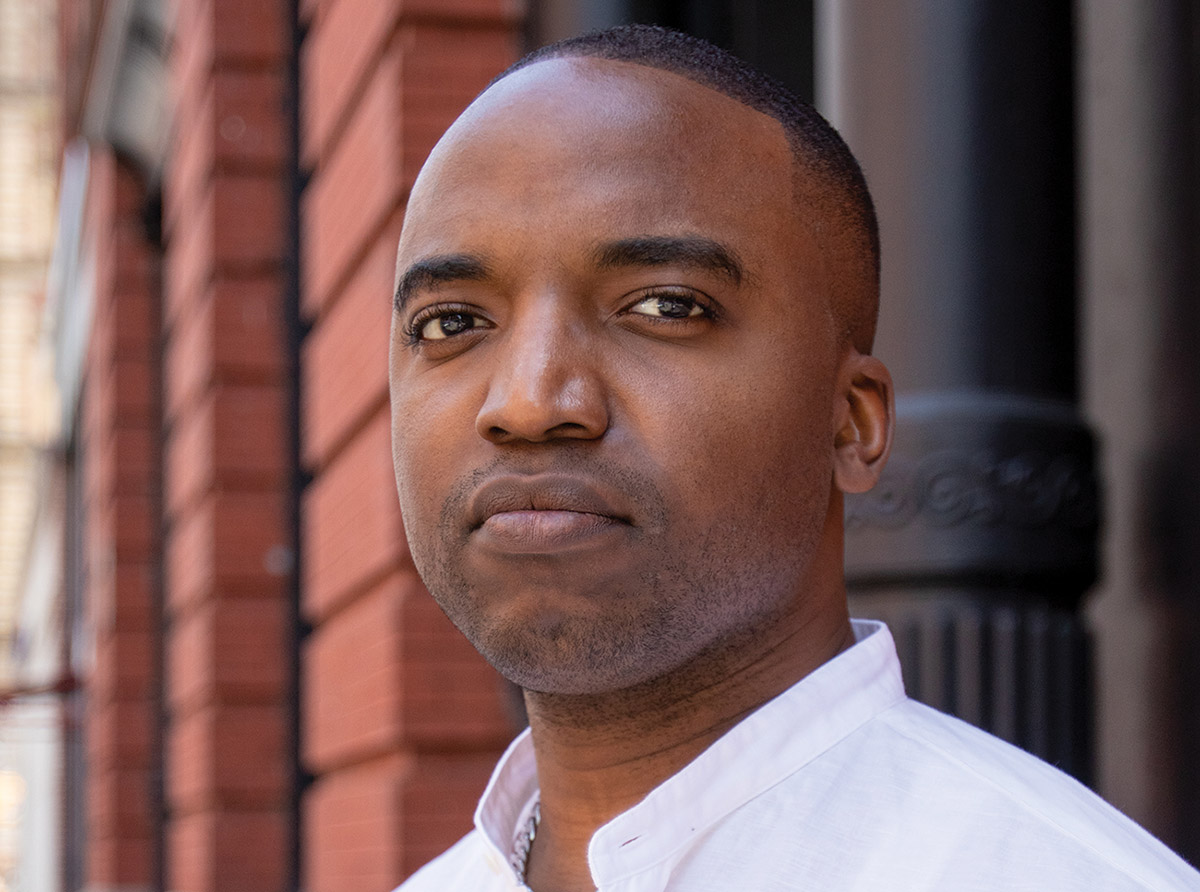
connecting with compassion
After graduation, Lainé returned to his high school, St. Benedict’s Preparatory School in Newark, N.J. There, he taught and ran the school’s Vox Institute, which spreads the word about the school’s unique, student-led ethos. “Before continuing my career, I really wanted to give back to a community that invested so much in me,” he says.
Prescribing Change

At Swarthmore, Hussain decided to pursue medicine to follow in the footsteps of her brother (Jawaad Hussain ’05), but that didn’t stop her from taking several marine biology courses with professors Liz Vallen and Rachel Merz. During these classes, she discovered a deep passion for the study of climate change’s impact on the environment. “When I took those courses, that’s when I fell in love with the ocean,” Hussain says. “It was my first real exposure to the importance of conservation.”
Clearing Hurdles
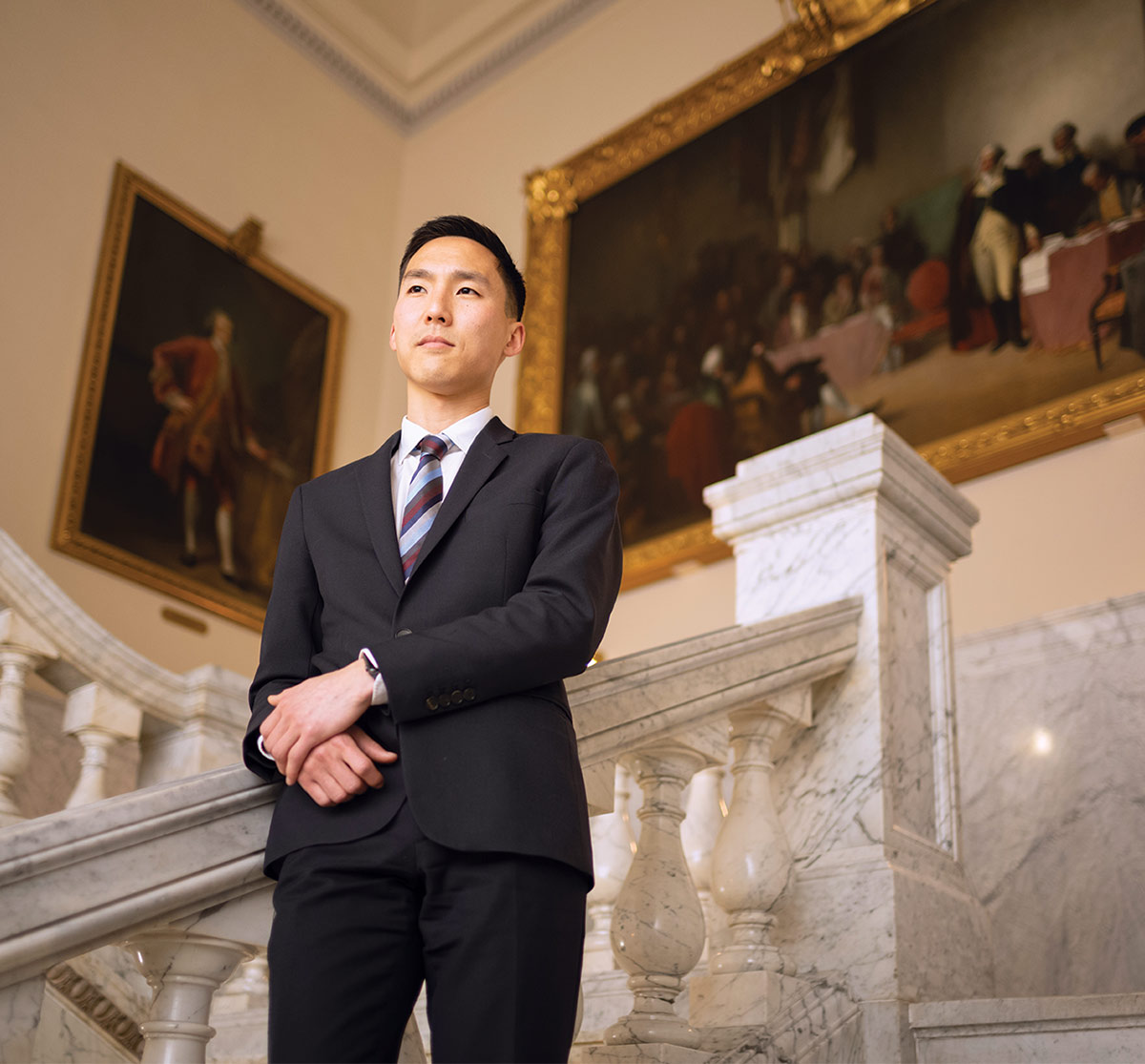
The administration of the newly elected Democrat has been “very much in startup mode,” says Heo. After eight years of Republican governance, “we walked into a situation where some of the good muscles of government had been atrophied, intentionally or otherwise,” he says. Nearly 14% of state jobs were unfilled, according to the state’s Department of Legislative Services.
Before entering state government, Heo spent six years as a senior manager and analyst with the Emerson Collective, which advocates for progressive causes including education, immigration reform and gun control. As Swarthmore’s first Schwarzman Scholar, he deepened his understanding of government by earning his master’s in global affairs at Beijing’s Tsinghua University.
The Fragile Dynasty
of the Gorilla
Photography Amy Vedder and Bill Weber
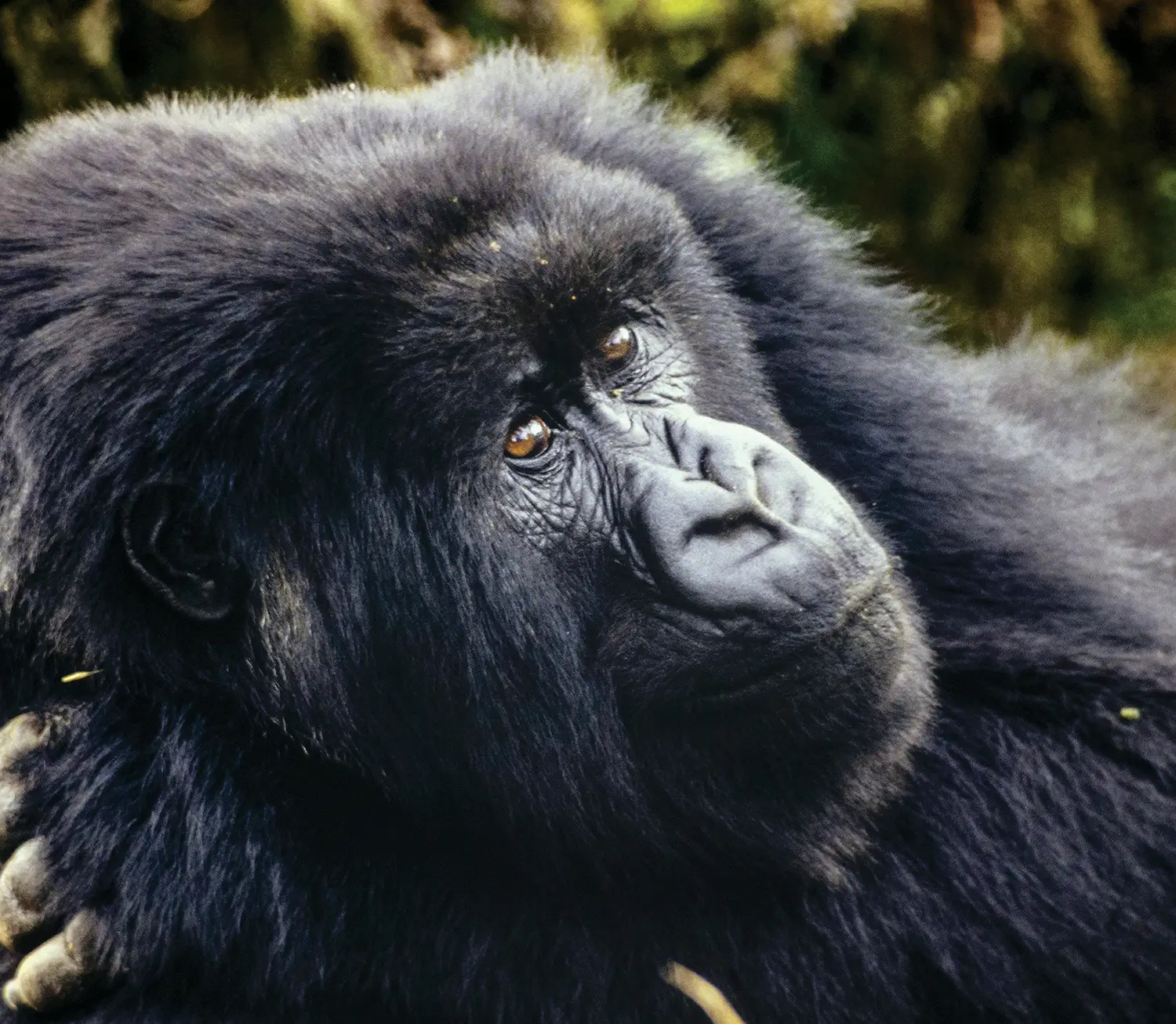

In fact, conservationist Bill Weber ’72, H’23 not only survived said unimaginable circumstance, but still blames himself for it.
Recalling the early ecotourism encounter that unfolded on Rwanda’s Virunga Mountain Range in 1979, Bill crosses his arms and slowly shakes his head. He was leading a group of 20 French tourists to view gorillas when one of the tourists fell and screamed. The noise startled the troop of gorillas, who melted away into denser foliage. When Weber crawled ahead through a tunnel of vegetation searching for a better vantage point, he encountered a lone silverback male who, displeased with the intrusion, pursed his lips, slapped the ground, and charged Weber to put a fine point on the matter.
After the attack, Weber needed to make it back down the rough terrain for aid, without his glasses, which had been crunched in the melee. Eventually, he was treated at a Ruhengeri hospital for the two incisor bite wounds and several broken ribs. A few inches to either side of his neck could have led to a disastrous spinal cord injury.
Boxed In

In the early 20th century, a “crossword craze” was sweeping the nation, and women were at the forefront. Housewives, suffragists, and flappers shaped the puzzle in its early days, and, as a result, it was labeled a feminine “distraction” from more “useful” intellectual pursuits.
Although the crossword remains highly popular today, its cultural associations have undergone a radical transformation. Solving The New York Times crossword confirms one’s status as a serious thinker, and published constructors are overwhelmingly male.
chester county history center
G. Raymond Rettew ’26 (right) pioneered a way to produce penicillin on a mass scale during World War II.
The
Mushroom Man
A modest chemist finds a path to penicillin under wartime pressure
by Jamie Stiehm ’82
But Rettew didn’t do too badly in life after a “fat and fancy-free” boyhood that led to Swarthmore Preparatory School.
The Scottish doctor Alexander Fleming is famed as the genius who discovered antibacterial penicillin in 1928, extracting the compound from mold.
Just a blink in time later across the Atlantic, Rettew was the self-trained expert (with no formal degree) who pioneered a way to produce penicillin on a mass scale in wartime. The United States and the United Kingdom were then embroiled in the fierce fight against Nazi Germany.
The leading practical expert on mushroom spawn, Rettew used his deep well of knowledge to develop a rapid process for mass production of penicillin for the Allied front in Europe.
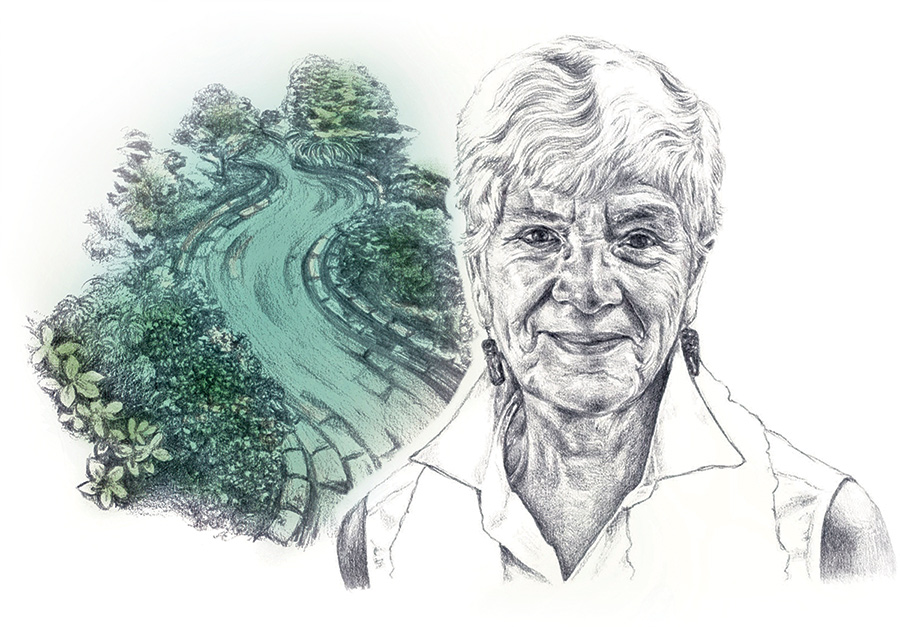
A Profound Impact
t was February 1973, and Mary Rowe ’57, a shy and quiet feminist trained as an ivory tower research economist, was about to be thrown into practice in a new job at the Massachusetts Institute of Technology.
As a confidential and impartial resource, Rowe was to hear concerns and ideas from members of the MIT community and do her best to help develop, and offer, both informal and formal options for resolution. By the end of 1973, she had received hundreds of visits about every kind of workplace issue from every corner of MIT: faculty, staff, students, a past president, custodians.
Some of what she heard surprised and concerned her.
Plant a Garden,
Write to a Friend
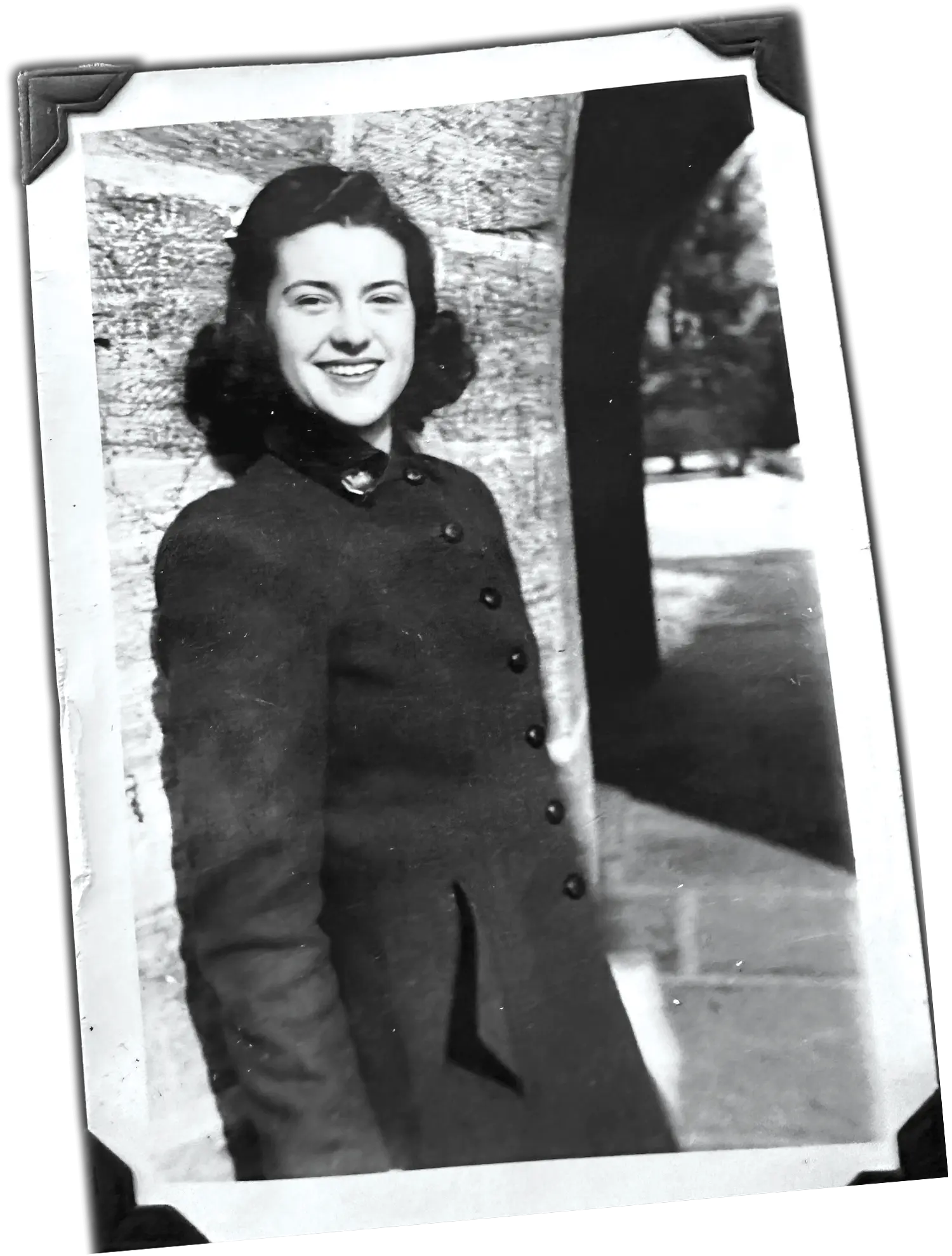
Above: Janice Robb Anderson ’42 on Swarthmore’s campus. Today she enjoys reading, volunteering, and planting vegetable gardens.
orn into an Army family, Janice Robb Anderson ’42 moved frequently as a child. Her father, a West Point graduate, was in the Army Corps of Engineers, and the family lived in several places in the East and Midwest, as well as in the Panama Canal Zone.
When she arrived at Swarthmore in 1938, she studied Latin and Greek and played “too much bridge.”
“All the boys were pacifists,” according to Anderson. “The minute Pearl Harbor was bombed, all the boys became patriots and enlisted.”
After college, she, too, joined the war effort by working for IBM.
Anderson trained on their machines, IBM’s giant precursors to the computer. She taught Women’s Army Corps members and government workers to use the equipment.
When World War II ended, Anderson shipped out to Asia in 1946. “After two months at sea, we limped into Yokohama,” she says. When she arrived, Tokyo had been badly bombed, and the survivors were starting from scratch.
“In the early days after the war, Japanese people had to wear wooden clogs, because they didn’t have leather for shoes,” says Anderson. “They packed trains to go to the countryside to scavenge for food. It was terrible.”
Instruments of Change
nlearning. That’s the mission of Stephanie Hsu ’08. As the founding executive director of Yakima Music en Acción (YAMA), she leads an after-school program in Washington state that has taught hundreds of schoolchildren, many from historically marginalized communities, to be self-confident risk-takers.
After school, nearly 100 children in grades three through 12 flock to Garfield Elementary School in Yakima, a town of 100,000 people two hours east of Seattle.
For the past 11 years, children have arrived five days a week for intense, but fun, two-hour sessions.
With violins and violas to their chins and cellos and stand-up basses beside them, they study under a dozen YAMA instructors. After mastering works by Beethoven to Brahms, and from mariachi to video game music, they play in three orchestras that perform for parents and townspeople.
The music culture Hsu has created puts a premium on passion and gratitude, rather than perfection and conformity. “YAMA celebrates wins, and it celebrates mistakes as proof you’re learning. Every time students make a mistake, we teach them that they can learn from it,” she says.

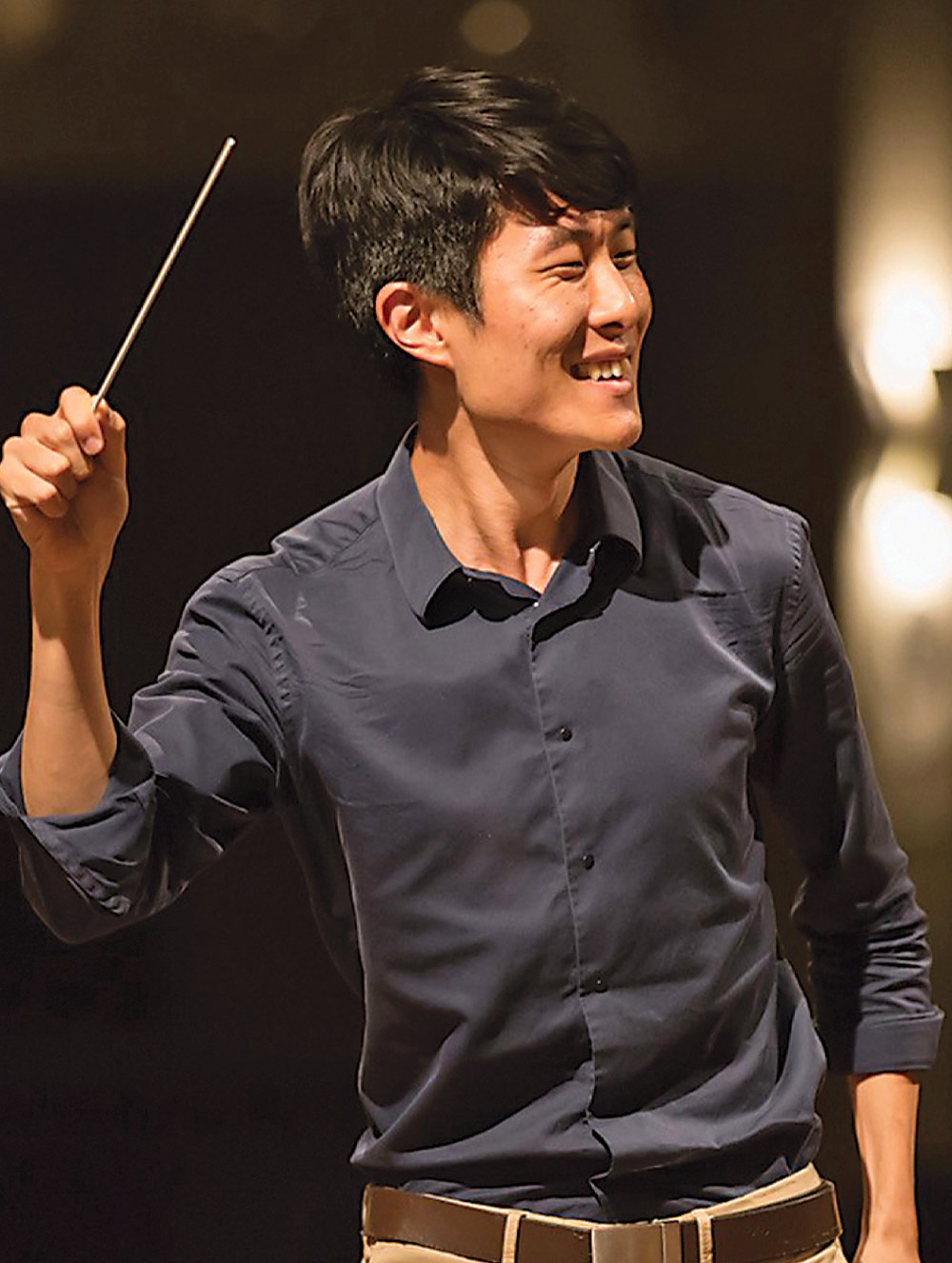
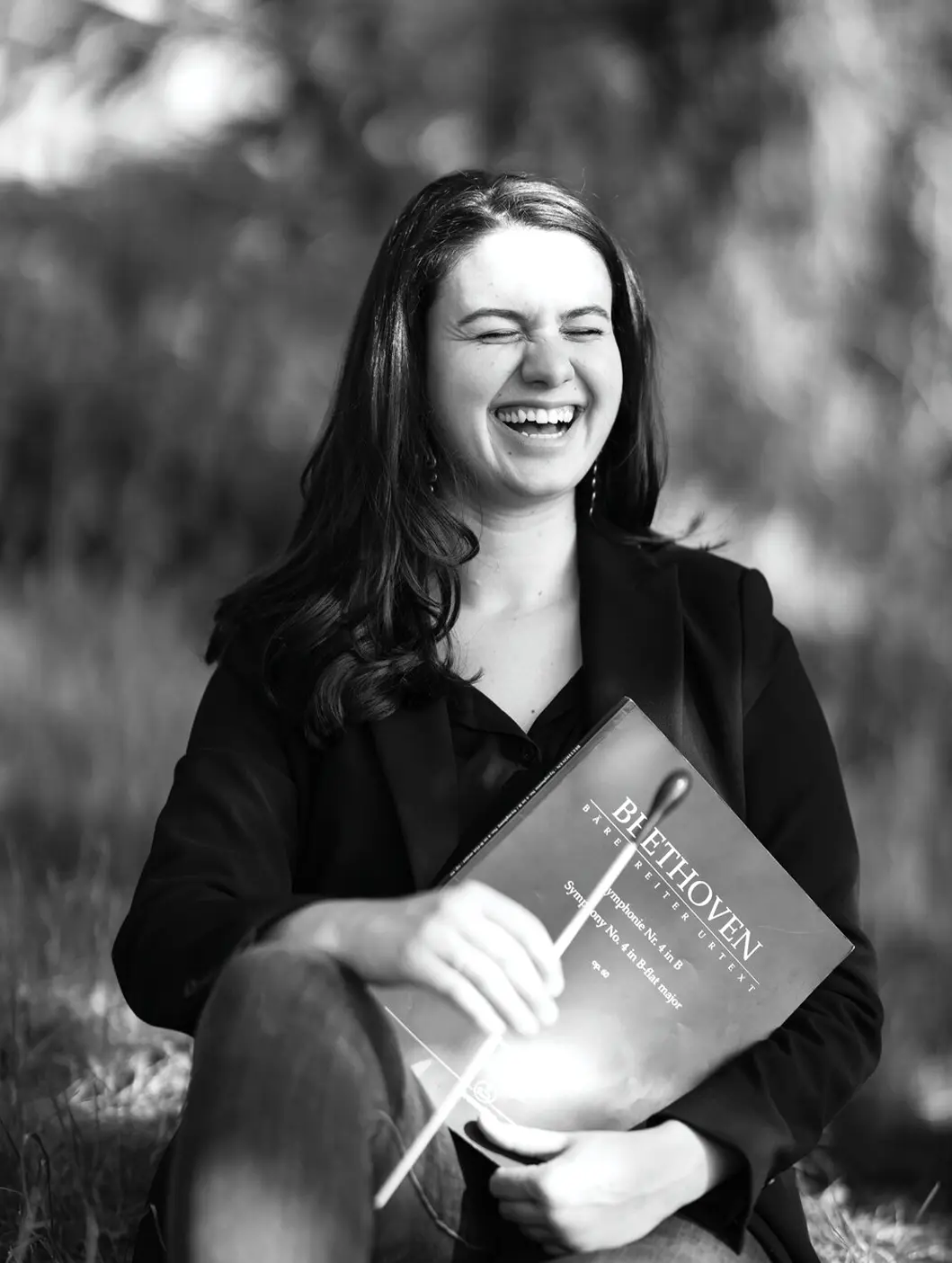
Conducting a Friendship
by Mahika Shergill ’26
Kim, who envisioned a career in investment banking, discovered his passion for conducting during a transformative performance of Mozart’s Requiem in high school. Swarthmore seemed like the perfect intersection for his diverse interests.
“Swarthmore really changed my life in that it allowed me to do conducting with no prior experience,” says Kim, who credits Andrew Hauze ’04, senior lecturer in music, with nurturing his conducting skills from scratch.
class notes

Welcome to Alumnihood
Sept. 17–20
The Young Alumni Ambassador Program invites graduates from the classes of 2011 through 2023 to join them in welcoming the Class of 2024 into the alumni community. In-person programs are currently planned for New York City and Boston.
swarthmore.edu/YoungAlumni
Garnet Weekend
Nov. 1–2
Celebrate what makes Swarthmore special during our annual Homecoming and Family Weekend.
swarthmore.edu/GarnetWeekend
Alumni Weekend 2025
May 29–June 1
Class years ending in 0 and 5, prepare to celebrate your next milestone reunion! Save the date for next spring’s celebration.
swarthmore.edu/AlumniWeekend
Alumni Events
Find information about how to register for in-person and virtual events.
swarthmore.edu/AlumniEvents
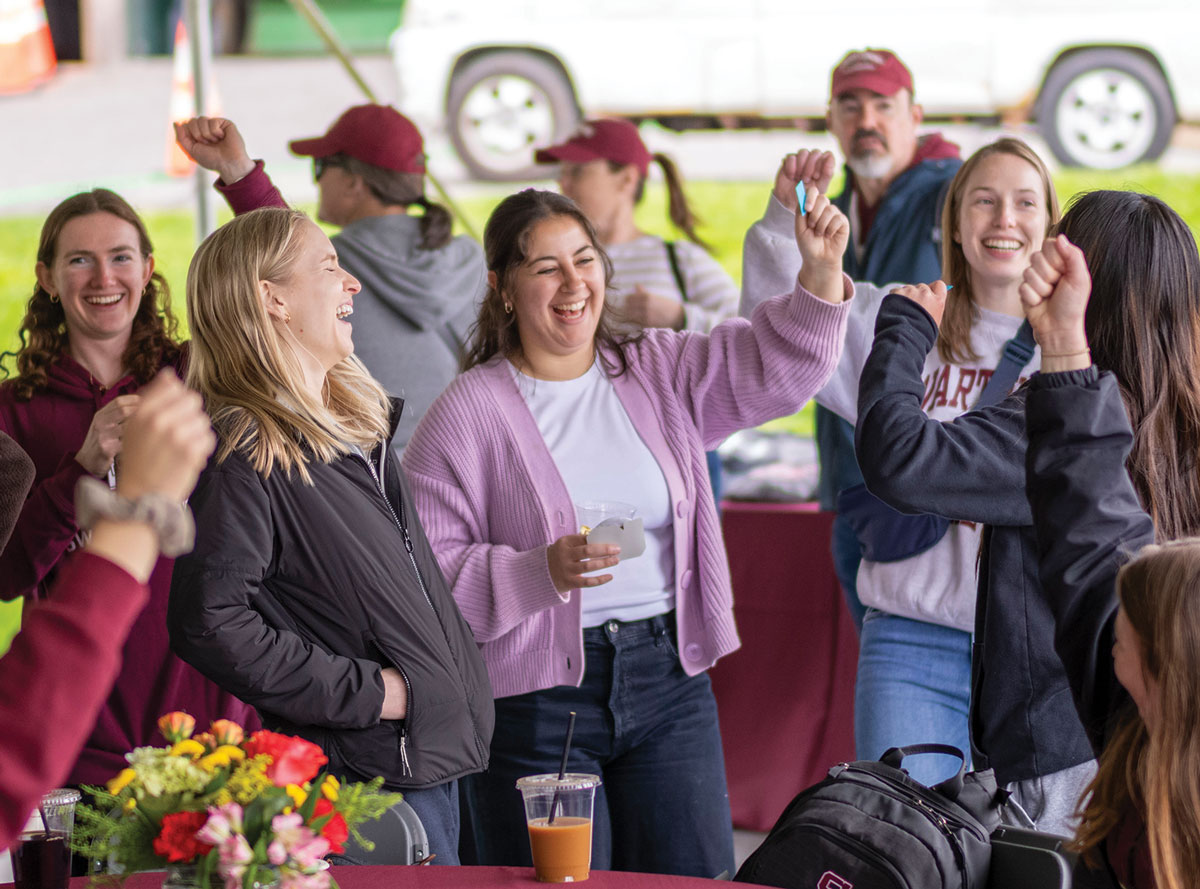
Your support makes a Swarthmore education extraordinary and accessible.
Your support makes a Swarthmore education extraordinary and accessible.
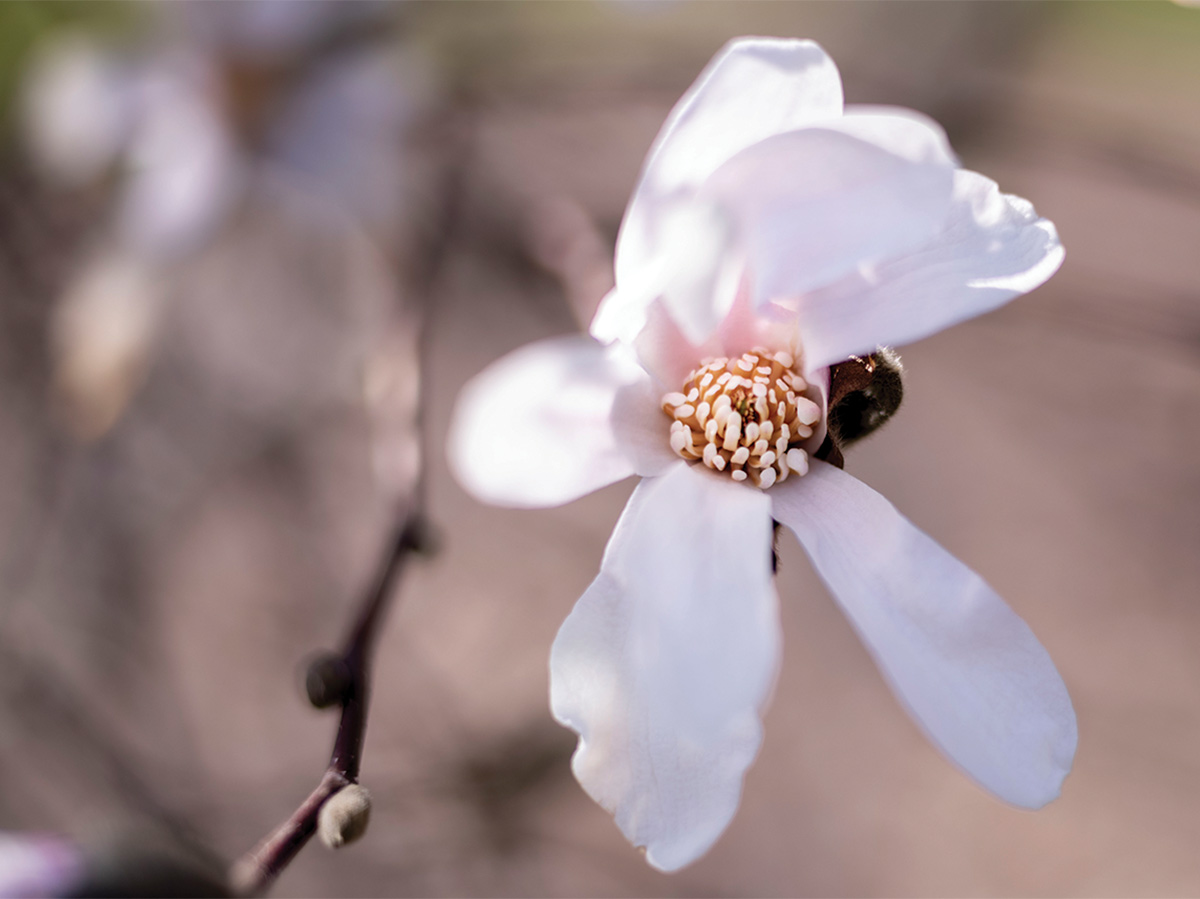
their light lives on
-
Alfred “Al” L. Salt NV
Al, a minister who continued to serve after retirement, died Dec. 11, 2023.
A veteran of World War II, he attended Swarthmore before moving to Canada and earning his bachelor’s and master’s in history and his licentiate of theology at Bishop’s University as well as a Ph.D. in divinity at Notre Dame University. Al served at various churches, including in Millington, N.J., before retiring in 1993, although he continued to serve churches, including at St. Mary’s Episcopal Church, Bonita Springs, Fla.
-
Lucy Selligman Schneider ’42
Lucy, an editor and collector of political memorabilia, died Jan. 8, 2024.
She earned a bachelor’s in political science at Swarthmore and had a long career as an editor of children’s books, meeting such authors as Eleanor Estes, Elizabeth Enright, and Lucy Boston. Recollections of Lucy’s early life are archived at the Jewish Kentucky Oral History Project at the University of Kentucky Libraries. She attended political demonstrations into her 100s and immersed herself in reading fiction, history, and The New York Times (which she copyedited as she read).
-
Gretchen Howe Miller ’44
Gretchen, a storyteller, died Sept. 30, 2023.
She earned her bachelor’s in psychology at Swarthmore where she received the Oak Leaf Award, was in the Hamburg Show, and served later on the Alumni Council and her class’s Reunion Committee. Gretchen, who also attended the University of California–Berkeley, was a retired independent storyteller.
-
Alfred “Al” L. Salt NV
Al, a minister who continued to serve after retirement, died Dec. 11, 2023.
A veteran of World War II, he attended Swarthmore before moving to Canada and earning his bachelor’s and master’s in history and his licentiate of theology at Bishop’s University as well as a Ph.D. in divinity at Notre Dame University. Al served at various churches, including in Millington, N.J., before retiring in 1993, although he continued to serve churches, including at St. Mary’s Episcopal Church, Bonita Springs, Fla.
-
Lucy Selligman Schneider ’42
Lucy, an editor and collector of political memorabilia, died Jan. 8, 2024.
She earned a bachelor’s in political science at Swarthmore and had a long career as an editor of children’s books, meeting such authors as Eleanor Estes, Elizabeth Enright, and Lucy Boston. Recollections of Lucy’s early life are archived at the Jewish Kentucky Oral History Project at the University of Kentucky Libraries. She attended political demonstrations into her 100s and immersed herself in reading fiction, history, and The New York Times (which she copyedited as she read).
-
Gretchen Howe Miller ’44
Gretchen, a storyteller, died Sept. 30, 2023.
She earned her bachelor’s in psychology at Swarthmore where she received the Oak Leaf Award, was in the Hamburg Show, and served later on the Alumni Council and her class’s Reunion Committee. Gretchen, who also attended the University of California–Berkeley, was a retired independent storyteller.
-
Virginia “Ginny” Walton Christy ’45
Ginny, a librarian and volunteer, died Feb. 4, 2024.
She attended Swarthmore, leaving in 1944 to marry John M. Ogden ’43 who died shortly after D-Day, and remarried in 1947. Ginny, who also studied at West Chester University, served as head librarian at the Norman Williams Public Library in Woodstock, Vt., and after retirement, volunteered at the visitors’ booth on the Woodstock Green and at the Dartmouth Hitchcock Medical Center. She was a member of the Unitarian Universalist Church North Chapel and its church fair and other committees.
looking back

Chasing Glimpses
Their mission was threefold: to capture large-scale photographs of the corona, to test Einstein’s theory that rays of light passing near a massive body in space would be visibly bent as they followed the curve created by the body’s mass, and to learn about the chemical composition of the corona and its motion.
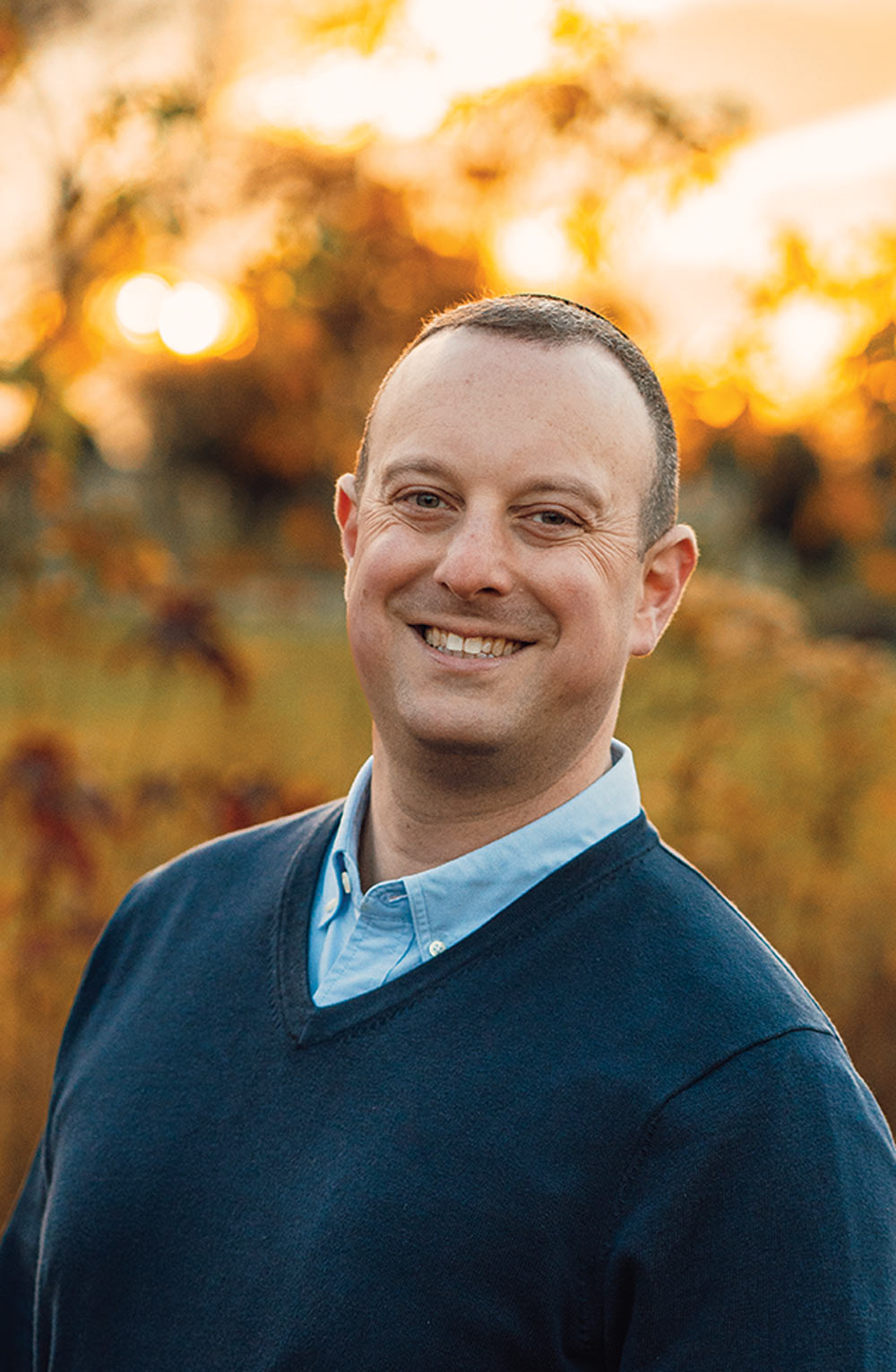
the perfect storm
What did you and your students find in studying climate anxiety?
There have been troubling increases in rates of anxiety about climate change, especially with young people. This ranges from general existential fears to specific obsessions about one’s own role and responsibility. Through our research effort, collecting data online from hundreds of people, we found that climate anxiety is associated with other kinds of internalizing symptoms, such as depression, anxiety, and stress. And it’s also related to a tendency to catastrophize, or always focus on worst-case scenarios, intolerance of uncertainty, and sensitivity to guilt, which can then snowball, leading to worse and worse feelings.

ONCE MORE UNTO THE BREACH, DEAR FRIENDS
Crum Regatta was a splashy success this year. Students equipped with vessels from canoes to homemade plywood skiffs traveled down the mighty Crum Creek. The 500-meter race through chilly, shallow water is a high-energy tradition at the College. On April 19th students dominated the three-foot deep creek once again making the Regatta a regal right of spring.

ONCE MORE UNTO THE BREACH, DEAR FRIENDS
Crum Regatta was a splashy success this year. Students equipped with vessels from canoes to homemade plywood skiffs traveled down the mighty Crum Creek. The 500-meter race through chilly, shallow water is a high-energy tradition at the College. On April 19th students dominated the three-foot deep creek once again making the Regatta a regal right of spring.

Back cover

- Need-blind, no-loan financial aid and scholarships
- Extraordinary student-faculty research opportunities
- Innovative academic programs
- Swarthmore Athletics
- And so much more!


